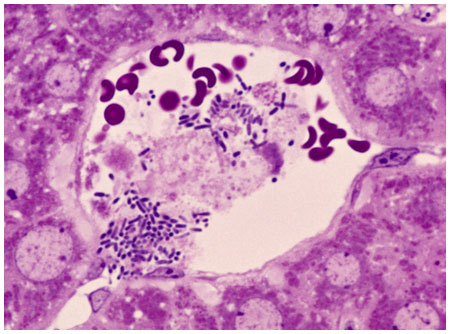Bacteria have sometimes behaviour that can amaze scientists, by its complexity and efficiency. Salmonella can commit suicide and help their “brothers” to establish infections that are more damaging, thus helping their species. But scientists believe they have found the answer to this surprising kamikaze behavior.
This phenomenon which is called self-destructive cooperation often helps Salmonella typhimurium and Clostridium difficile establish powerful “citadels” of infection in the gut. Scientists from Switzerland and Canada studied this type of developing an infection, and the team led by Martin Ackermann of ETH Zurich in Switzerland made some interesting discoveries.
The bacteria inflames the gut and causes an eradication of the microflora, which is a competition for resource. However, in this process they destroy other bacteria too (most of it actually). After this assault there is no competition for the few bacteria remaining, which charge on the gut, claiming their victory.
“We thought it was a very strange phenomenon,” says team member Wolf-Dietrich Hardt, also at ETH Zurich. “The bacteria in the gut lumen are genetically identical, but some of them are prepared to sacrifice themselves for the greater good. You could compare this act to Kamikaze fighter pilots of the Japanese army.”
This suicidal act is caused by a genetic configuration, which is expressed only in some ocasions, not in all. Only a part of the bacteria have this suicidal gene, less than a quarter. If all of them would carry it, all of them would commit suicide as a consequence. The team concluded that some cells sacrifice for the greater good, which is quite an inventive and effective way of achieving a goal.










